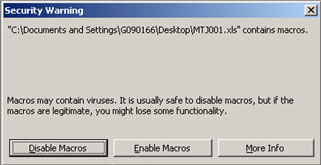Success Story: Progressive Dairy Health Services Saves $16k/year
“Its simplicity made a veterinarian able to write some “code” that did the things that needed to be done automatically.”
Macro Scheduler gets used in all kinds of fascinating places by all kinds of people. Eduardo Garbarino is a veterinarian working for Progressive Dairy Health Services and is using Macro Scheduler and Workflow Designer to automate some of their key software processes. I asked Eduardo if he would share his experiences in a short interview. Here it is.
What problem or challenge were you facing that moved you to look for an automation solution?
“There were a few processes that needed to run that were done manually and sometimes were not run on time. Also there is an important amount of information that we collect and analyze from the dairies we service that took a lot of time to extract from the dairy program and inserted in excel.”
What were you doing prior to Macro Scheduler?
“Manually extracting information and entering information between different programs. Also some processes were run manually in our milk laboratory program.”
What types of features/tools did you need in an automation solution?
“Something flexible and simple to learn since I am not a computer geek, I am a dairy veterinarian that uses computers and programs to provide a more complete service to our clients.”
What did Macro Scheduler bring to the table that made it the right solution for your business?
“Macro Scheduler is a very flexible and easy to learn program that allowed me to do a variety of tasks. I started with it just to run a couple of very simple tasks and as I learned more of the program, was able to use it on different applications. I think I will keep discovering and using new features (new for me) in the near future. Its simplicity made a veterinarian able to write some “code” that did the things that needed to be done automatically.”
How has Macro Scheduler been received by your employees to date?
“They are amazed with the time we save on computer work.”
What have been the benefits of using Macro Scheduler?
“Before using Macro Scheduler it took one person working about 10 working days to extract information and insert it in Excel to provide our clients with the information needed to monitor their businesses.
We service about 40 dairies with 3000 cows each. Now we can let the program run before leaving the office at night and by the next morning all spreadsheets are completed and ready to go. These kind of time savings mean to us about 80 hours per month. At $17/hr that is $1360/month or $16320/year.
The other important aspect is that it differentiates us from the competition as this process done manually is very tedious and many times not completed, while after automation we guarantee the timely delivery of the information. Our competition has quit on providing this service.”
What tools and features of Macro Scheduler are you using the most?
“I use the DDERequest function a lot (for interaction with Microsoft Excel). I also use Workflow Designer for simplifying development and building automation routines in flowchart form.”
Why would you recommend other organizations use Macro Scheduler?
“Macro Scheduler has no limit on what you can accomplish. It is basically up to your imagination. Also it is very simple to learn and use. But the most important reason is the excellent technical support that stands behind the product, with very quick responses to questions and providing solutions to your projects.”
Want to share your Macro Scheduler Success Story? Drop me a line.
